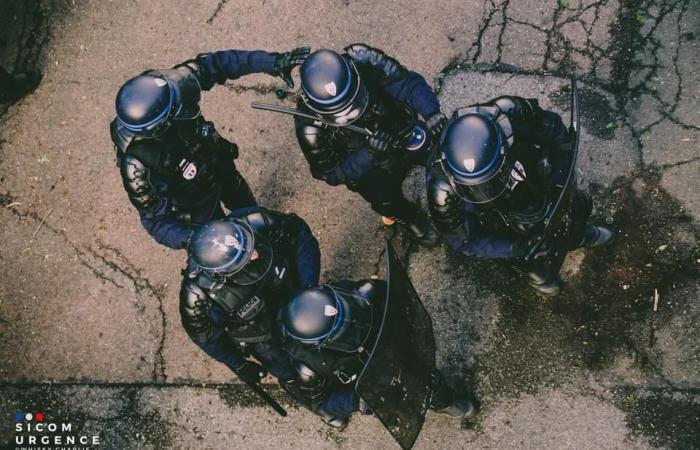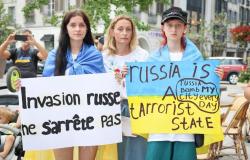The Paris police prefecture recently took possession of the Villeneuve-Saint-Georges fort, located in Val-de-Marne, formerly occupied by the Paris firefighters’ school since 1966. During an exclusive report, the newspaper Le Parisien was able to observe intensive training of the police, involving the 12th intervention company and the motorcyclists of the Brav-M.
Under a bright blue sky, the flashing lights of police vehicles illuminate the imposing vault of the Villeneuve-Saint-Georges fort. Nearly 130 police officers are preparing for an afternoon of arduous training, punctuated by the piquant taste of tear gas. This 11-hectare site, which has trained nearly 55,000 firefighters since 1966, is now the nerve center for training the intervention units of the Public Order and Traffic Directorate (DOPC).
A New Era of Training
Since January 1st, the Paris Fire Brigade has handed over the keys to the fort to the police headquarters, marking a new chapter for this historic site. Law enforcement, previously forced to train miles away from their bases, can now benefit from this space to perfect their law enforcement techniques.
The fort, with its vast and varied terrain, open squares, tunnels and buildings, is ideal for simulating demonstrations, urban violence and large-scale interventions. This infrastructure also allows specific exercises such as mass killings or interventions in confined spaces, in collaboration with the Samu.
Training in the Heart of the Action
Under a blazing sun, the 108 members of the 12th intervention company, equivalent to the CRS in the provinces, discover the facilities for the first time, accompanied by 18 motorcyclists from the Brav-M. The exercise scenario is meticulously prepared to test and refine their skills in quasi-real conditions.
A fictitious demonstration is launched, with police officers playing both the protesters and the police. The goal: to maintain order, respect the planned route and manage incidents. The first difficulties quickly appear: at a crossroads, the procession tries to deviate from its trajectory. The police must form a firm barrier to contain the protesters.
Further on, the tension rises. Tennis balls fly at helmets and shields. A charge is ordered to arrest the troublemakers, brilliantly carried out by the police who bring the individuals back without losing ground. In another simulation, rioters attack fences, simulating the assault on a shopping center. The Brav-M, on a motorcycle, surrounds the demonstrators while the police on foot push them back, taking them in a pincer movement.
Crisis Management and Adaptability
The final debriefing highlights the challenges encountered and the successes achieved. “It was realistic: it doesn’t necessarily happen as it does on paper,” emphasizes one of the commissioners, satisfied with the performance of the troops despite the overwhelming heat. Areas for improvement are identified, but the commitment of the police officers is praised.
The police officers, despite exhaustion and trying conditions, applied their mantra: “Discipline, technicality and professionalism.” Through these intensive exercises, the police headquarters is strengthening the capabilities of its law enforcement agencies to ensure the security and protection of property and people, ready to face the challenges of tomorrow.






